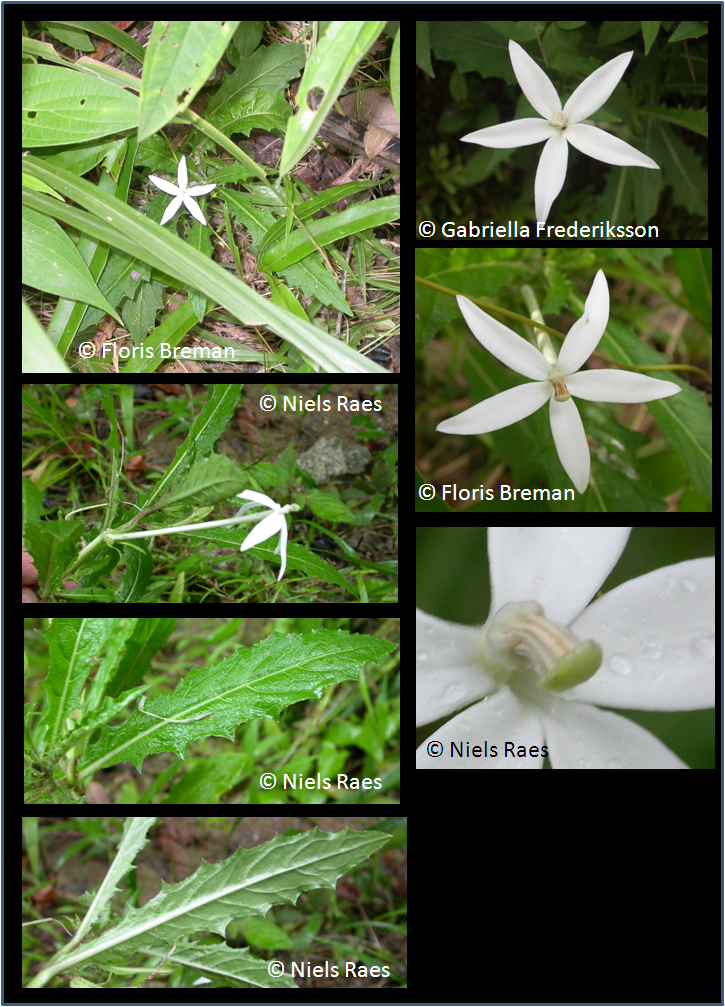Hippobroma longiflora (L) G.Don, Gen. Hist. 3: 717 (1834)
(Latin for 'long flowers' referring to the long corolla tube of the flower)Synonyms
Isotoma longiflora (L) C.Presl
Isotoma longiflora var. runcinata (Hassk.) Panigrahi, P.Daniel & M.V.Viswan
Isotoma runcinata Hassk.
Laurentia longiflora (L.) Peterm.
Laurentia longiflora (L.) Endl.
Laurentia longiflora (L) E.Wimm.
Laurentia longiflora var. runcinata (Hassk.) E.Wimm.
Lobelia longiflora L
Rapuntium longiflorum (L) Mill.
Solenopsis longiflora (L) M.R.Almeida
Description
Perrenial herb p to 60 cm tall with milky white sap that is irritating and can be absorbed through the skin, and a small amount of
sap in the eyes can cause blindness. The plant forms a rosette of narrow lanceolate leaves that are thick, hairy and coarsely pinnatilobed,
leaves along the stem are placed alternate. The flowers are long and white, on a 2 cm hairy pedicel. Sepals are about 3 cm long.
The flower tube is usually 8-11 cm long, plus the 2-2.5 cm long petals, which are placed in the shape of a star. Anthers bearded.
The fruit is a hairy capsule divided in two cells with minute light brown seeds.
Ecology
Grows in moist, shady, lowland areas with moderate rainfall.
Distribution
Original from Central America, but now common throughout the tropics.
Uses
Ornamental. It is notable for its concentrations of two pyridine alkaloids: lobeline and nicotine.
Local names
China: Ma zui cao.
English: Bethlehem star, Madam fate, Star flower.
